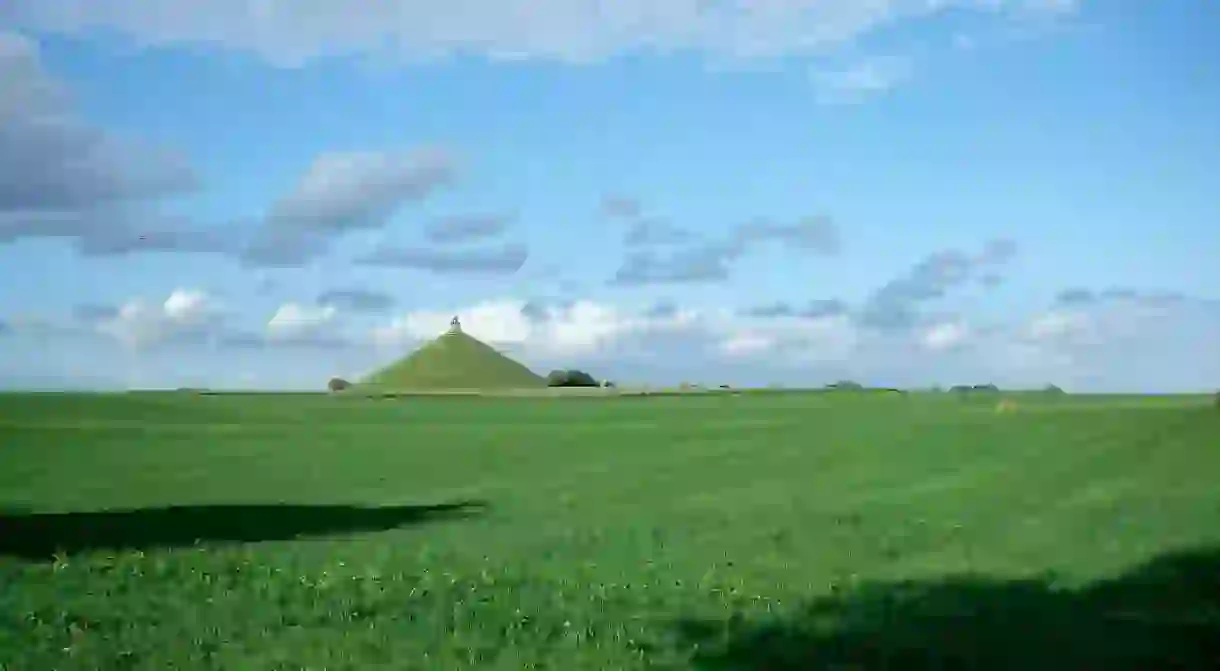The 10 Best Things To Do in Waterloo, Belgium

Waterloo is obviously known for the famous battle named after it. Many of the things to do here have a connection with the final defeat of Napoleon. It’s a great place for history buffs, but for those not too keen on exploring the ins and outs of the historical fight, there are plenty of other things to see and do in and around Waterloo.
Church of Saint Joseph
Church

The Church of Saint Joseph of Waterloo (Église Saint-Joseph de Waterloo in French) is an 18th-century Belgian church in Waterloo dedicated to Saint Joseph. There are several memorial plaques to officers who fell at the Battle of Waterloo inside the building. The church is in French baroque classicism style, while the former presbytery has a beautiful neo-classical façade.
Sonian Forest
Forest

The Sonian Forest or Sonian Wood (Zoniënwoud in Dutch or Forêt de Soignes in French) is a 4,421-hectare (10,920-acre) forest in the northeast of Waterloo and stretches out all the way to the southeast edge of Brussels. It consists mainly of European beeches and oaks, with several trees that are more than 200 years old. Inside the forest is the Bosmuseum Jan van Ruusbroec or Musée de la Forêt (‘Forest Museum’), which presents displays about the flora, fauna, history of the forest, and forest management. As of 2017, the Sonian Forest has been inscribed as a UNESCO World Heritage Site.
Castles of Argenteuil
Forest

The Castle of Argenteuil is a 300-hectare estate located in Waterloo, where three castles have been built and of which two still exist. It is named after the small river Zilverbeek (Argentine in French), and is a former royal domain. Both Prince Charles, Count of Flanders and his older brother king Leopold III once resided on the estate. The three castles on the estate were built in 1832, 1856 and 1929. The first castle burnt down in 1847 during restoration works.
Memorial 1815
Memorial

Golden Palace casino
Casino

The Wellington Museum
Museum

In 1815, the Bodenghien inn in Waterloo was chosen by the British Military as headquarters for all the army staff. The commander-in-chief of the allied armies, the Duke of Wellington, stayed here the night before and the night after the battle. It was turned into a museum dedicated to Wellington’s memory and renamed the Wellington Museum not long after the end of the battle. Both Wellington’s room and that of Alexander Gordon, his senior military officer who died at the Bodenghien inn of injuries he sustained during the battle, are open to visitors. The building dates back to 1705.
The Lion's Mound
Memorial

From atop the 40-metre-tall Lion’s Mound you can see the entire area the battle of Waterloo was fought on. At the Lion’s feet are stone tablets displaying the different formations during several stages of the battle. The mound stands at the supposedly exact place where William II of The Netherlands was knocked off his horse during the battle. He would later become the King of The Netherlands. The personal coat of arms of William II features a lion , that’s why this animal was chosen as a symbol to stand on top of the hill. Building the mound took three years.
The Last Headquarters of Napoleon
Museum

In this small farmhouse just outside of Waterloo, Napoleon spent his last night before the start of the battle of Waterloo and it is quite likely he drew up the finalised version of his battle plans here. The farm was converted into a museum in 1951 and includes weapons, paintings and engravings, as well as Napoleon’s bed, a lock of his hair, his death mask and the skeleton of a French soldier. In the garden there is an ossuary which holds bones that have been found on the battlefield.
The Panorama
Memorial

The Hougoumont Farm
Memorial

At this farmhouse, the allied forces faced Napoleon’s army for the first time. The orchard and garden of the fortified farm changed hands no less than seven times during the battle, but the buildings stayed in the hands of the coalition soldiers the whole time. The main building was burnt to the ground. The house still standing there today is the former gardener’s home. In his book Les Misérables French writer Victor Hugo claims 300 bodies were thrown down a well at the back of the farm. However, archeological research done at the site could not confirm this. Hougoumont, which had become dilapidated, was fully restored in time for the 200th anniversary of the battle and re-opened to the public on 18 June 2015.













